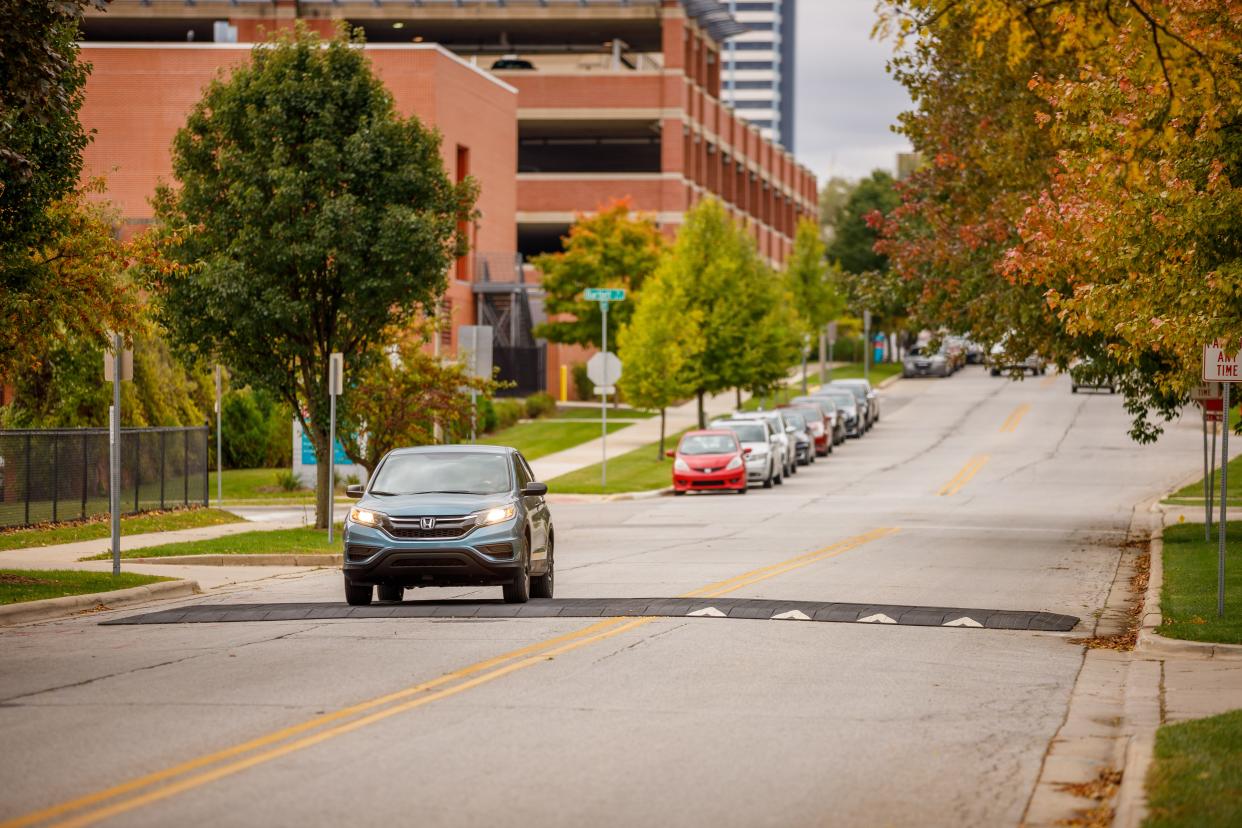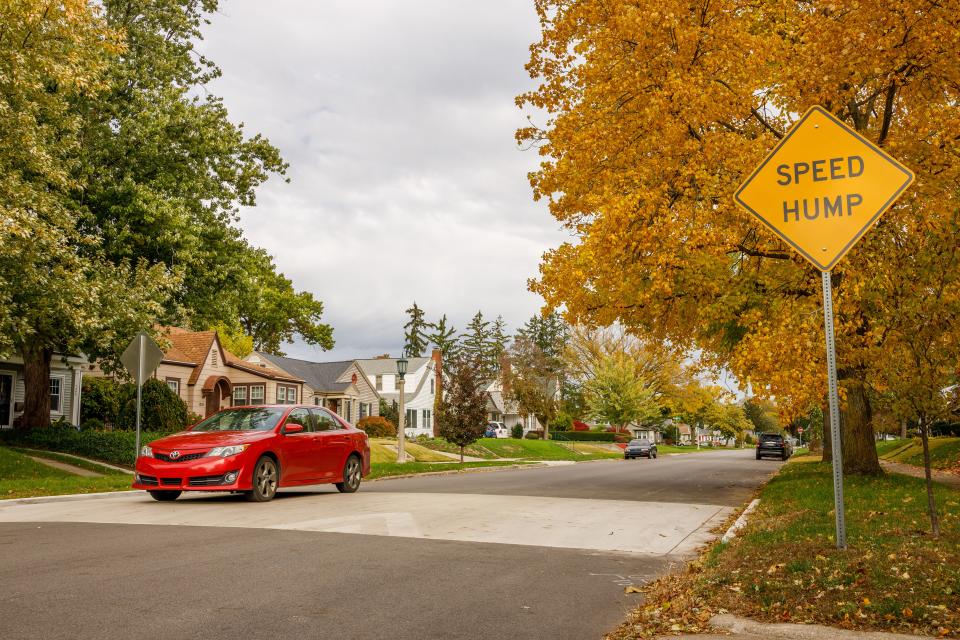South Bend considering concrete humps, narrower lanes to limit speeding across city

SOUTH BEND — City engineers have identified dozens of streets in need of traffic-calming measures that would cost an estimated $1.9 million to implement.
This Thursday, the city will host the first of three open houses to gather feedback on 42 project proposals. Changes would cover 19 linear miles spread evenly across the six South Bend Common Council districts.
Engineers ranked roads to determine priority
In a presentation to councilors, city engineer Kara Boyles said engineers sifted through more than 200 reports residents made from 2018-2021 regarding speeding vehicles. More than 80 new suggestions reported in 2022 don’t yet factor in the plans.
The reports steered engineers to create a point system to rank high-priority areas. Streets with no sidewalks, no bike lanes and no traffic control devices were weighted more heavily in the analysis. School zones and areas where crashes have occurred were also given priority.
But Boyles hopes residents join the public meetings to help engineers capture concerns that are missing in the data.
“When we bring these out to our residents, maybe we’ve identified something that they don’t agree with,” she said. “Maybe there’s something that they feel is much more critical than what we’ve identified.”
City spending on traffic calming has increased
The city’s annual budget for traffic calming was meager for years until it began to steadily increase in 2019. Spurred by federal pandemic-relief legislation, the budget jumped to more than $1.4 million in 2022 and sits at $800,000 for 2023.
The traffic-calming plan suggests spending $320,000 in each of the city’s six council districts for a total of $1.9 million. Seven or eight streets in each district are being considered.
What tools the city has used to calm traffic
Troy Warner, the 4th District councilor, said in a Tribune viewpoint that he hears more concerns from residents about speeding and aggressive driving than any other topic.
Warner highlighted two infrastructure changes the city uses to slow down drivers: narrowing vehicle lanes and adding speed humps.
Implementing a “road diet” involves reducing the space given to cars along a traffic corridor. Actions include adding a left-turn lane to convert four-lane roads to two through lanes and designating space for bicyclists. The expectation is that people will drive slower to feel safe on narrower roads.

Speed humps are a popular request for slowing down drivers in neighborhoods. They typically cost $8,000 to $10,000 for the city to install, according to Warner; the backlog of demands for speed humps would exceed $4.5 million if completed.
“In my opinion we cannot afford,” Warner said, “and we likely do not want to be the city that puts speed humps on every street.”
The city installed 12 rubber speed humps in November as a pilot program. Boyles said most new humps would be made of concrete because of its durability.
Enforcement of speed limits has also lagged while the South Bend Police Department isn’t fully staffed. SBPD has said its new contract with officers could lead to a full roster by 2024.
When are the meetings?
The public meetings will be held at the three different locations on the following dates:
Thursday, Feb. 16 from 5:30-7 p.m. at Rum Village Nature Center, 2626 S. Gertrude St.
Tuesday, Feb. 21 from 5:30-7 p.m. at Howard Park Event Center, 219 S. Saint Louis St.
Thursday, Feb. 23 from 5:30-7 p.m. at the Near Northwest Neighborhood Community Center, 1013 Portage Ave.
The streets under consideration in each district
District 1
Johnson Street
Huey Street
Olive Street
Lathrop Street
Elwood Avenue
LaSalle Avenue
District 2
Grandview Avenue
Vassar Avenue
Wilber Street
Walnut Street
Brookfield Street
Prast Boulevard
Kaley Street
District 3
Wall Street
Greenlawn Avenue
High Street
Calvert Street
Broadway Street
36th Street
Indiana Avenue
District 4
Northshore Drive
Corby Boulevard
LaSalle Avenue
Sunnyside Avenue
Rockne Drive
Bissell Street
Madison Street
Manchester Drive
District 5
Walter Street
Fellows Street
Altgeld Street
Ridgedale Road
Inwood Road
Topsfield Road
Erskine Boulevard
District 6
Ford Street
Edison Avenue
Indiana Avenue
Donald Street
Brookfield Street
Huron Street
Kosciuszko Street
Walnut Street
This article originally appeared on South Bend Tribune: South Bend seeks feedback on $1.9 million plan to slow traffic in city

